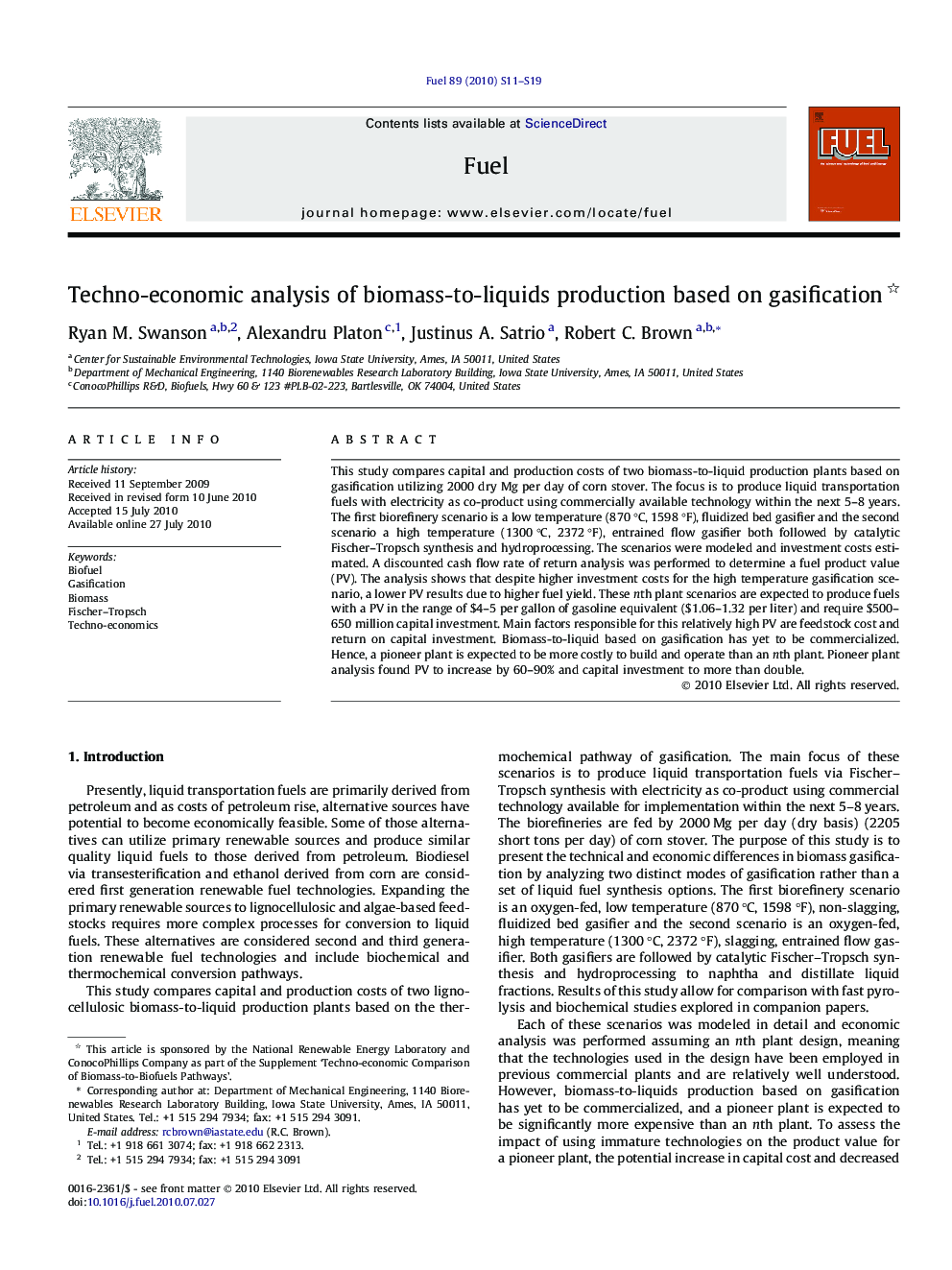| Article ID | Journal | Published Year | Pages | File Type |
|---|---|---|---|---|
| 206736 | Fuel | 2010 | 9 Pages |
This study compares capital and production costs of two biomass-to-liquid production plants based on gasification utilizing 2000 dry Mg per day of corn stover. The focus is to produce liquid transportation fuels with electricity as co-product using commercially available technology within the next 5–8 years. The first biorefinery scenario is a low temperature (870 °C, 1598 °F), fluidized bed gasifier and the second scenario a high temperature (1300 °C, 2372 °F), entrained flow gasifier both followed by catalytic Fischer–Tropsch synthesis and hydroprocessing. The scenarios were modeled and investment costs estimated. A discounted cash flow rate of return analysis was performed to determine a fuel product value (PV). The analysis shows that despite higher investment costs for the high temperature gasification scenario, a lower PV results due to higher fuel yield. These nth plant scenarios are expected to produce fuels with a PV in the range of $4–5 per gallon of gasoline equivalent ($1.06–1.32 per liter) and require $500–650 million capital investment. Main factors responsible for this relatively high PV are feedstock cost and return on capital investment. Biomass-to-liquid based on gasification has yet to be commercialized. Hence, a pioneer plant is expected to be more costly to build and operate than an nth plant. Pioneer plant analysis found PV to increase by 60–90% and capital investment to more than double.
